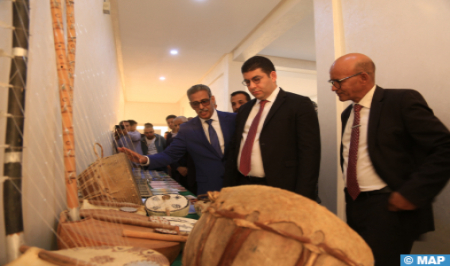Speaking at the exhibition “Moroccan Sahara: a thousand-year-old archaeological heritage” and the forum on “the scientific value of tangible and intangible heritage in the Moroccan Sahara”, Bensaid said that archaeological research has revealed the succession of ancient civilizations in this region of the Kingdom, dating back to the era of the Lower Paleolithic or what is called the Acheulean period.
He added that this period was characterized by the use of distinctive stone tools, such as stone axes that were discovered in Aousserd at “Kourcia”, “Boulariah” and other sites in the basin of Smara, especially Oued “Essafa”, “Aasli”, “Boukerch” and “Larchiouat”.
The minister recalled that the Moroccan Sahara has experienced intense activities of Homo sapiens, especially during the Middle Paleolithic period, characterized by the use of foliated points for hunting, in addition to the multiplicity of archaeological sites dating back to the era known as “Aterian,” which is also characterized by the precision in the manufacture of stone tools, as well as the modern eras of prehistory in Morocco.
He noted that the Neolithic sites, dating back about 4,000 years, revealed the use by human beings of distinctive techniques in the manufacture and decoration of pottery specific to the Moroccan Sahara as a cultural identity, as well as methods of domestication of animals and manufacture of precise foliate points called “Saharan foliate points”.










